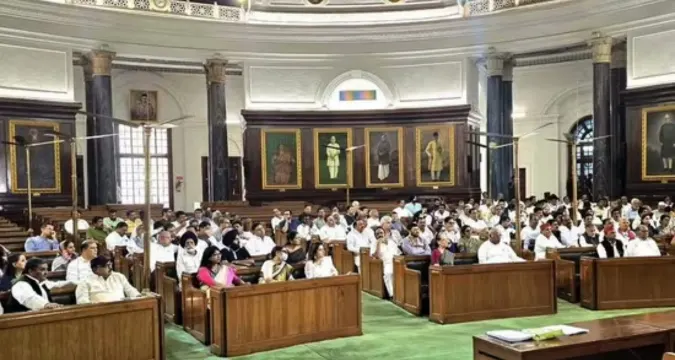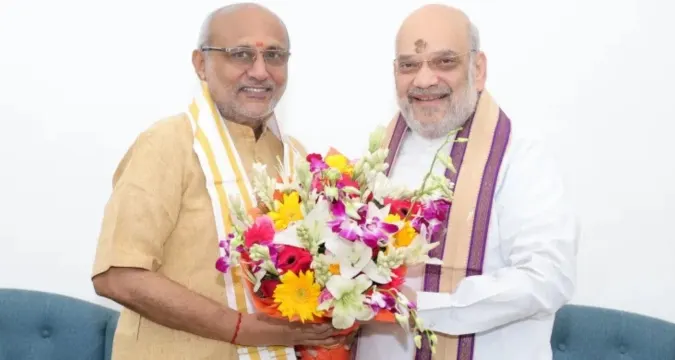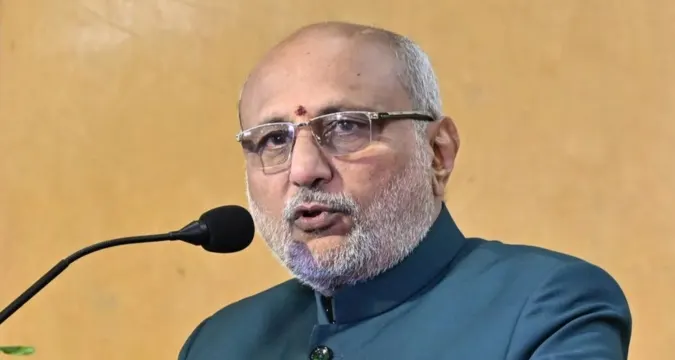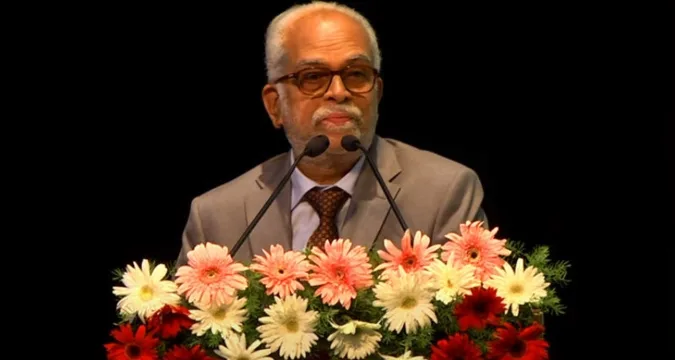On September 9, 2025, the Vice Presidential election returns were declared in a pivotal democratic situation in the nation. The incumbent C P Radhakrishnan of the ruling national democratic alliance (NDA) party became the winner defeating the anti-corruption candidate of opposition B Sudershan Reddy by 452 to 300 votes. According to the officials, fourteen Members of Parliament did not vote at all. Radhakrishnan is now the 15th Vice President of India, replacing Jagdeep Dhankhar who resigned on July 21 on health grounds.

This was an election that took place in an environment full of political charges and it was high turn up, lively politicking, and calls on the conscience of the electorates on the part of both the relevant and the opposition.
High Voter Turnout: 96% Participation
According to the Election Commission of India 96% of all eligible MPs voted in this Vice Presidential poll. The morning started with polling, which ended at 5 pm; the count started at 6 pm. The results were published by 7 pm.
The Prime Minister Narendra Modi, was the first to cast his ballot and this marked the beginning of a politically charged day. Others who made an early day vote included Union Defence Minister Rajnath Singh, Parliamentary Affairs Minister Pralhad Joshi and former Prime Minister H. D. Deve Gowda. Other key voters were leader of the Opposition in the Lok Sabha, Rahul Gandhi, and senior Congress leader, Sonia Gandhi.
CP Radhakrishnan’s Victory: A Resounding Mandate for the NDA
The narrowest victory of 152 seats spent by Radhakrishnan demonstrates under the NDA its numerical power in Parliament; and how it could bring its partners in the divide towards its camp. Radhakrishnan is known to have a long political career and organization that has seen him being considered as a mature and rooted politician in the sphere of public service and legislative actions.

In a congratulatory move, Prime Minister Modi alongside Home Minister Amit Shah went out to greet Radhakrishnan personally shortly after the announcement of the results that he had won. The newly instilled symbolism of this Rajasthan inquiry paid tribute to the fact that the NDA was convinced of his capability of guarding the chair of dignity of the office of Vice President, also serving as a chairperson of the Rajya Sabha.
Opposition’s Response: An Ideological Contest
As he announced defeat, the Opposition candidate number 2 Sudershan Reddy affirmed that he accepted this defeat in a humble manner and with unwavering faith in the democratic process of the great republic. Nonetheless, he did not fail to mention that despite the unfavorable outcome, the “ideological struggle goes on at an ever-increasing tempo.”
The opposition had positioned this election as a greater contest of ideas and encouraged its participants to vote in the spirit of India and to defend the pluralism of democratic expressions. They were unable to win, but their campaign brought attention to the future polarization of Indian politics and the need to consolidate the opposition unity.
Significance of the Election: Stability in Governance
The election of the Vice President is a delicate situation in Indian politics. As there is a Lok Sabha election in 2029, the position of the Vice President especially as the presiding officer of the Rajya Sabha will play a critical role in legislative balance.

Since the NDA has a majority in Lok Sabha, its control of the Upper House will dictate the efficiency with which some key bills are represented. The unbiased position of the Vice President in the evolution of proceedings will be essential in the century characterized by many gaffes and inciting debates.
The experience Radhakrishnan will have in parliamentary matters will serve as a source of leverage when it comes to coping with these hurdles. Observers observe that his re-election will mean continuity in office, as his predecessor Jagdeep Dhankhar was considered by most observers also as an authoritative personality when it comes to applied discipline by the Rajya Sabha.
Political Reactions Across the Spectrum
The responses on politics to the results came down the lines:
- Prime minister Narendra Modi praised Radhakrishnan as a true leader who took responsibility for the ideals of democracy and service to the nation.
- Home Minister Amit Shah who was the winner in the elections called the victory the mandate of the people with her elected people.
- In granting the defeat, Laodie, the opposition leaders reasserted their belief in democratic principles and pointed out that they would fight on ideological basis to the policies of the NDA.
A Contest in Context: From Dhankhar to Radhakrishnan
An election was held to replace the Vice President amid health reasons that led Jagdeep Dhankhar to resign on July 21, 2025, cutting short his term. His resignation left a gap in one of the most important constituents in the constitution and the Election Commission announced polls within the timeframe of the law.

This constitutional vacuum is then filled by Radhakrishnan who returns stability to the leadership of the Rajya Sabha. According to observers, when the House is being led by Dhankhar, it is characterized by aggressive leadership; but Radhakrishnan, possibly coming with a more consensus-based approach.
Implications for Indian Democracy
There are larger implications to the health of parliamentary democracy in India with the election of a Vice President in 2025. The election, with 96% polling, took a step to reveal the value that MPs invest on constitutional processes despite a polarized political environment.
In the case of the NDA, this triumph challenges the supremacy of the two Houses of Parliament, which works to shape its legislative agenda even further in the coming years. To the Opposition, the outcome represents just another wake-up call to the power of unity and mobilization at the grassroots as a means of thwarting the numerical strength of the ruling coalition.
Outside politics, The office of the Vice President still serves as an icon of the Indian aspiration to checks and balances and what this means is that the upper chamber is a location of constructive debriefing and legislative supervision.
Looking Ahead: Challenges Before the New Vice President
The challenges that CP Radhakrishnan would have to deal with as the new Vice President and Chairperson of the Rajya Sabha are direct:

- Preservation of Parliamentary Decorum: Rajya Sabha has been experiencing countless disruptions over the past years. Liberation of speech and sanity will be a tricky affair.
- Legislative Stalemate: Due to bills that are likely to generate controversy in the upcoming sessions, the facilitation provided by Radhakrishnan will prove essential.
- Building Institutional Trust: In an era when popular confidence in institutions is being questioned, the Vice President will have to rebuild faith in purity of parliamentary procedures.
- Striking a Balance between Ideological Partakes: As the Opposition is making the election an ideological campaign, how the differences should be managed will influence the political environment.
A Democratic Milestone in 2025
India is a reminder of how strong its democratic processes are because of the Vice President Election 2025. The triumph of CP Radhakrishnan is a change in the record of parliamentary leadership, but this is the reality that will shape the future of legislative politics over the next few years.
As the NDA rejoices in this mandate, Opposition has indicated that it still carries on the ideological push back. To citizens, the importance of this election is not only based on figures but more on the guarantee that the working of the institutions of democracy remains strong.
Now with the new Vice President in India, the only question that remains is whether Radhakrishnan will influence the workings of the Rajya Sabha in which the most significant debates of India shall develop over the years.








